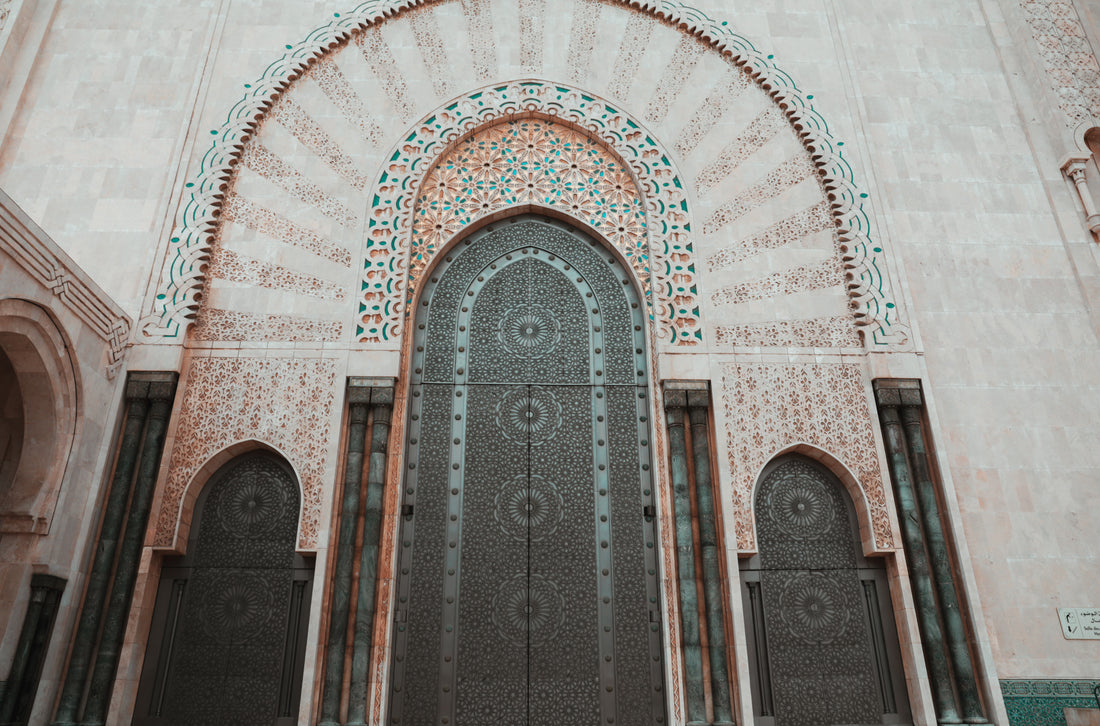Tracing the Path of Architectural Transformation
A Chronicle of Architectural influence and fusion through geographical sagas!
Islamic architecture unfolds as a captivating saga, weaving together the diverse threads of history, culture, and conquests. Beyond the surface beauty of Amazigh (Amazigh is the correct term for the original people of Morocco. The term Berber is an outdated term with negative history) roots and Moorish designs lies a narrative shaped by geographical invasions, each leaving an indelible mark on architectural evolution across different regions.
Amazigh Origins and Cultural Resilience - Influence Across North Africa
The Amazigh people, rooted in North Africa for millennia, established a distinctive architectural heritage blending indigenous practices with evolving Islamic styles. Over centuries, their architectural style adapted to geographical variations, from the Atlas Mountains to the Saharan oases, resulting in diverse structures that seamlessly integrated with the environment.
Despite foreign influences and invasions, Amazigh architecture retained its essence, evident in fortified granaries (agadir), kasbahs, and earthen dwellings that still dot the landscapes of Morocco, Algeria, and Tunisia today.

Moorish Magnificence Amidst Geographical Conquests - The Iberian Peninsula and Beyond
The rise of Moorish design during Islamic rule in the Iberian Peninsula marked a transformative period in architectural history. With the Moors' arrival came a fusion of Arabic, Roman, and Visigothic influences, resulting in breathtaking structures like the Alhambra Palace and Cordoba's Great Mosque.
The Moors' architectural prowess adapted to diverse landscapes, evident in the strategic use of water features, lush gardens, and intricate geometric patterns. Even after the Reconquista, their influence endured, shaping the architectural identity of Spain and Portugal.
Geographical Invasions and Architectural Metamorphosis - Impact of Conquests on Architectural Styles
Throughout Islamic history, geographical invasions and conquests catalyzed architectural transformations. Persian, Ottoman, and Mughal empires each introduced unique elements into Islamic architecture. For instance, Persian influences brought domes and intricate tile work, while the Ottoman Empire's architectural legacy included majestic mosques and expansive courtyards.
These invasions, while bringing change, also fostered a syncretic blend of styles, leading to the emergence of distinct regional architectural identities seen in modern-day Iran, Turkey, and the Indian subcontinent.
Legacy in the Present: Tracing Architectural Footprints - Modern-day Reflections
The enduring legacy of these architectural influences resonates through the landscapes of countries touched by Islamic history. From the towering minarets of Istanbul's skyline to the intricate details adorning the domes of Iran's mosques, the echoes of diverse influences persist.
In Morocco's medinas, Spain's Alhambra, or India's Taj Mahal, visitors encounter living testaments to the historical amalgamation of styles. Contemporary architects and preservationists continue to draw inspiration from these legacies, ensuring the conservation and adaptation of Islamic architectural marvels for future generations.
An Ever-Evolving Heritage of Architectural Grandeur
Islamic architecture has been shaped by geographical invasions and cultural amalgamations, and it stands as a testament to human creativity and resilience. The interplay of Amazigh heritage, Moorish splendor, and diverse conquests across history, have left architectural grandeur that endures through time, inviting admiration and exploration and is an inspiration to artists across the world.
Join in the conversation about art and architecture HERE or comment below to leave your thoughts.
If you’d like to see Eve’s art evolution and join on in the global travels of culture and art, you can sign up for our VIP list and even get a special 10% offer as a thanks.


